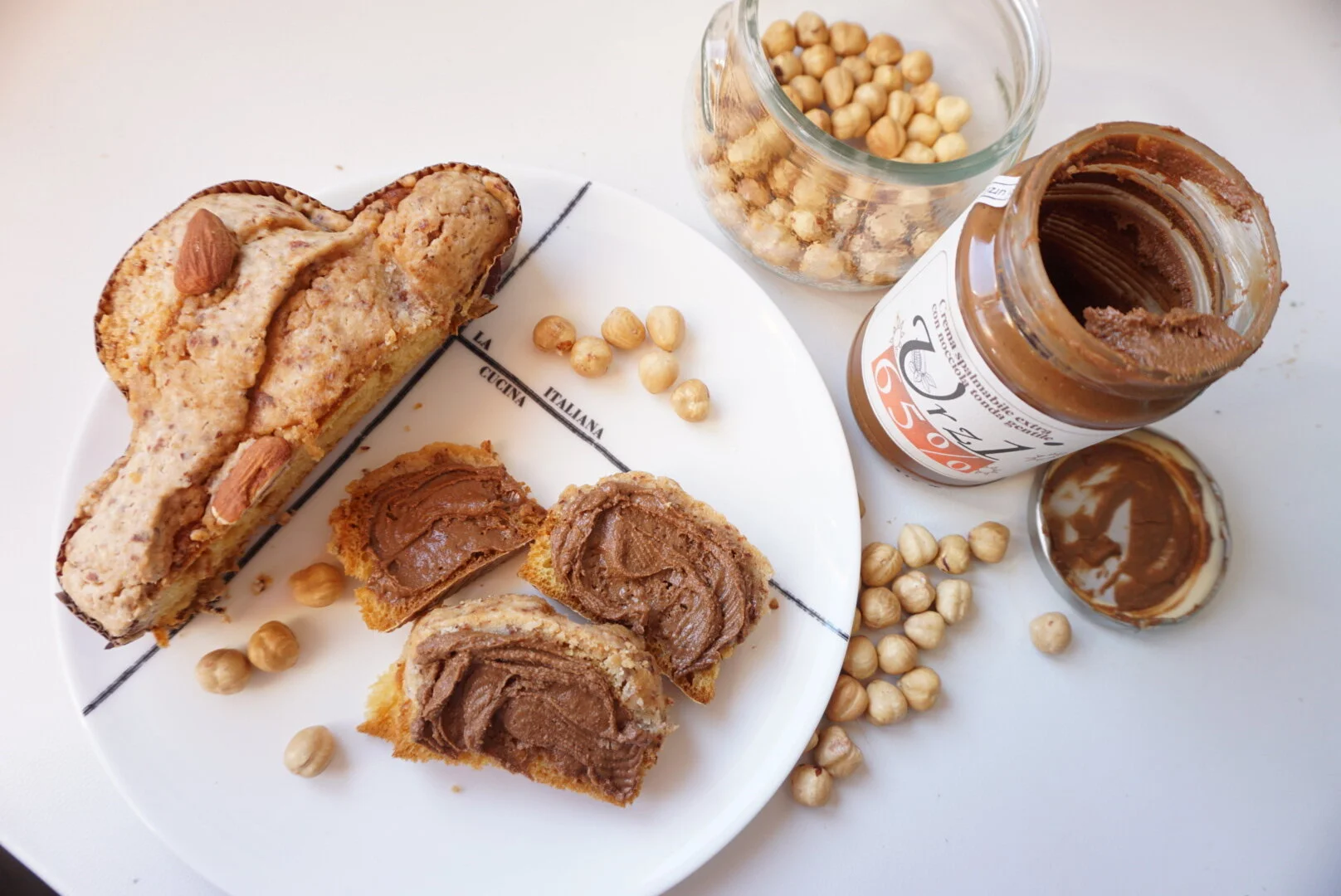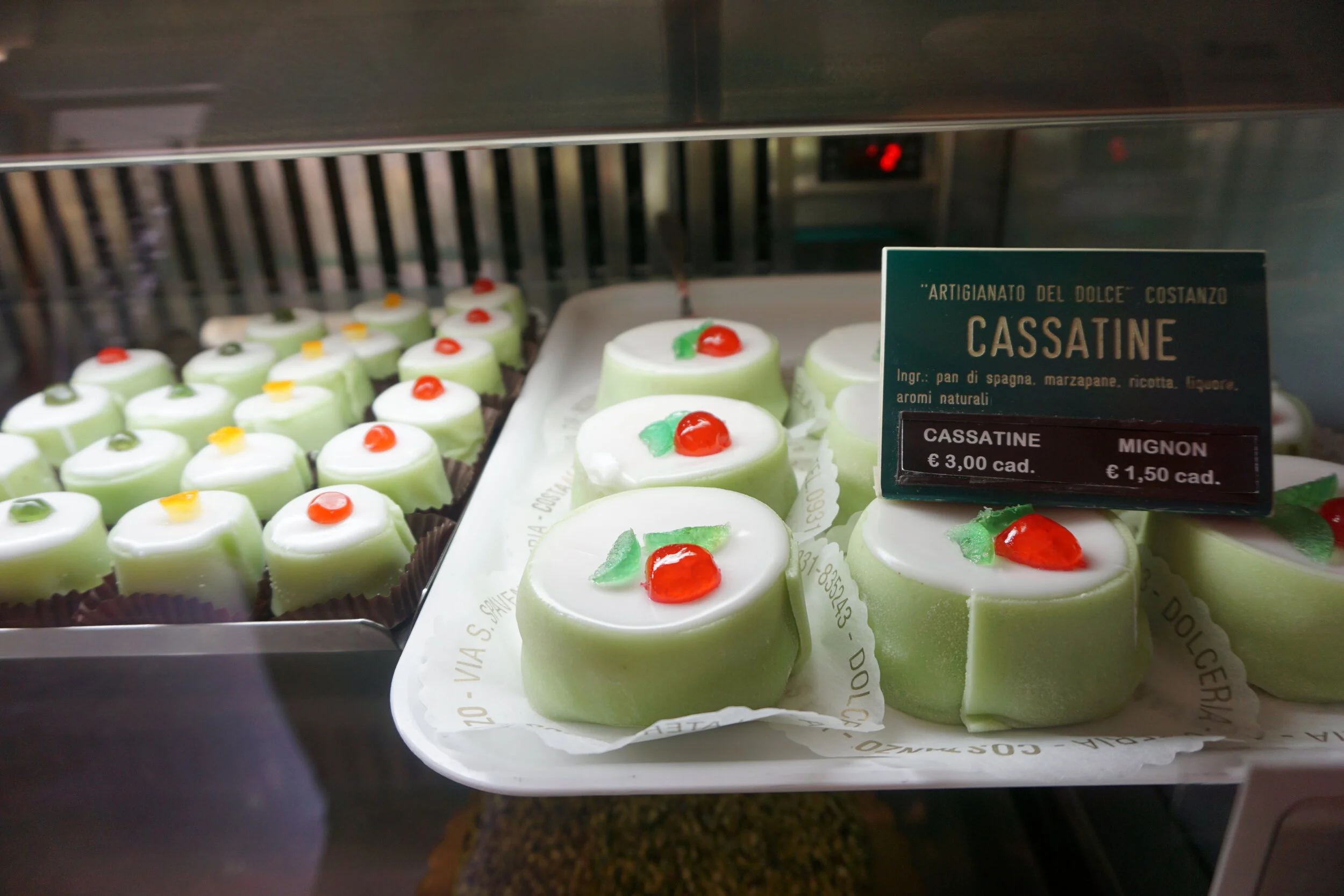Easter is a big deal in Italy. From Sicily all the way to the top of the country, each place celebrates the religious festival differently with processions, holy representations, religious rites, fairs and some interesting folklore traditions.
Unsurprisingly, food is a huge part of this. The table will almost always feature dishes made with symbolic ingredients, such as eggs and lamb, along with local spring ingredients like asparagus and artichokes. Traditional Holy Week desserts are usually egg-rich baked goods.
In Naples at Easter, you’ll find the streets of the entire city smelling of the delightful Pastiera, a ricotta cake scented with orange blossom and candied citron. Sicily has their Cassata, a sponge cake layered with ricotta and candied fruit, covered in royal icing. Tuscans have a simpler palette for sweets, but their favorites are just as delicious!
With Easter just around the corner, we thought we’d show you how to make a dessert table with a difference. The key to a successful dessert spread is to start with the table size itself. How big is it? Then you can work out how much dessert you will need to create the finished look you want. Some desserts that are pleasing to the eye may not be so great to eat. You don’t want to end up throwing out half the table. With that in mind, here are four Italian Easter treats that are made for a dessert spread.
Slather with hazelnut or pistachio spread and you’re in for heaven
Colomba di pasqua
The undisputed queen of Italian Easter desserts. Shaped like a dove, the bread is
glazed and covered with crystallized sugar and unpeeled almonds. Hence the name, Colomba (meaning dove) and Pasquale (meaning Easter).
According to one legend, it was first seen after the battle of Legnano in 1176. In this story of two doves, symbolizing the Holy Ghost, appear on the altar of the chariot carrying the battle standards. The Colomba Pasquale commemorates that victory, which was made on behalf of the pope and the Holy Roman Empire.
But in reality, the Colomba di Pasqua is a much more recent invention. In the 1930s, Mantuan artist Dino Villani thought to capitalize on the machines being used by Motta to make panettone to create a new Easter cake with a very similar recipe. And so the Colomba was born. Delicious on its own, Colomba is often served with fresh berries, drizzled in dark chocolate, slathered in sweet spreads or paired with whipped cream.
A Colomba di Pasqua should be at the centre of your dessert table. Leave it whole, so guests can enjoy the beautiful dove shape.
Our food club/Pasqua Gourmet Spring Box box includes a colomba cake from an artisanal bakery in Italy. Order your box HERE
Schiacciata di pasqua
Schiacciata di Pasqua is a fluffy, sweet bread scented with the aroma of aniseed. Tuscany’s answer to Milan’s panettone, the Schiacciata di Pasqua was once a way of using up (and preserving) the abundance of springtime eggs. It also takes advantage of the early Spring weather (often humid and warm) to help the enriched dough rise.
According to the traditional recipe, it should be left to rise for 100 hours. So, preparation began on the Tuesday before Easter mixing enough flour, water and yeast for each guest at the Easter lunch. More flour per person was added the following evening, and so on for the remaining evenings until Good Friday. After the Holy Procession the real dough was prepared and left to rise all night until the following morning, then baked in a log oven.
Unsurprisingly, a lot of Tuscans no longer have the time to make a traditional schiacciata, so it can be found and bought in bakeries or “pasticcerie” throughout the region.
While many Tuscan towns have their own variation of the schiacciata di pasqua, Florence is the exception. The capital city reserves its own Schiacciata Fiorentina for February’s Carnival. A fluffy sweet bread, it’s flavored with orange, strictly high no more than three centimeters and often covered with powdered sugar (sometimes decorated with the typical symbol of the florentine lily in cocoa).
Whether you’re opting for the Tuscan standard or the Florentine variation, serve your schiacciata sliced into tiles or wedges. The Schiacciata di Pasqua can be a little plain, so serve with some sweet spreads like honey, nutella or pistachio spread on the side.
Easter cookies
Italian Easter Cookies are a tradition in almost every family. In the south of Italy, Calabrese families get together on Good Friday, to make their special version known as Sgute. These Italian Easter cookies are crunchy on the outside and soft and crumbly on the inside. It’s tradition to place a boiled egg in the centre just before baking. The egg is then peeled and enjoyed alongside the biscuit. In Sicily, these cookies are known as 'Pupa cu L'ova' or Cuddura and are decorated with a colored hard boiled egg and sprinkles.
While in Tuscany, quaresimali are chocolate alphabet cookies usually found during the Lenten period, but also popular at Easter. Thought to have been invented in a convent, the dark letters (previously darkened by caramelized sugar, now cocoa powder) were a symbol of mourning for Christ and were used by the nuns to spell the Gospel. With the flavor and texture of crisp chocolate wafer cookies, they’re especially popular with children.
Both varieties of these biscuits look gorgeous scattered across your Easter sweet table or packed in little transparent bags as take home gifts.
Our food club/Pasqua Gourmet Spring Box box includes Lenten chocolate hazelnut quaresimali cookies. Order your box HERE
Cassata
Easter is cassata’s grand moment. Sicily’s most beloved holiday dessert it’s believed to have originated in or around Palermo, where sheep’s milk ricotta, pistachios, and citrus were prevalent.
There are two traditional versions - cassata al forno, which has a simple ricotta filling, sometimes studded with chocolate, baked inside a pie crust, and cassata Siciliana - liqueur-soaked sponge cake layered on sweetened ricotta covered in pistachio-tinted marzipan, white glaze and colorful candied fruit.
Sicilians have a proverb: Tintu è cu nun mancia a cassata a matina ri Pasqua, which translates to “Sad is the one who does not eat cassata on Easter morning.”
Cassata is at its most beautiful when it’s presented whole and unsliced, but if you have a bit of spare time and a love for all things culinary, try your hand at making mini individual cassata, which will be a gorgeous finishing touch to your Easter spread.
While Tuscany doesn’t have anything quite as elaborate as the cassata, the region represents with its own ricotta cake, sweetly called the Torta della Nonna. Torta Della Nonna is one of the most classic Tuscan desserts you'll come across when you travel to Italy. Made by topping a shortbread crust with a lemon and vanilla pastry cream or ricotta filling and a smattering of nuts (sometimes pine nuts other times almonds) and a veil of powdered sugar, it's simple in its execution but delicious in taste.
Italian Dessert Wine pairings- bubbles!
No good Italian Easter dessert spread is complete without some bubbles! We like to serve these sweet treats with a sparkling sweet Brachetto d’Acqui. It’s rosy in color with a hint of wild strawberries and is a unique dessert sparkler from Piedmont perfect with cake and chocolate.
Cassata is usually paired with a passito, a sweet Italian dessert wine made from dried grapes. It needs to be a very sweet passito, as cassata is very sweet.
Curious to learn more about Italian wine? Join our monthly cheese and wine pairing event online to learn how to best pair these Italian cheeses and more with an Italian sommelier or contact us to arrange a private tasting!












